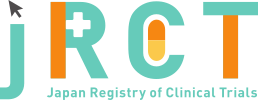臨床研究等提出・公開システム
|
Mar. 14, 2022 |
|
|
Mar. 14, 2022 |
|
|
jRCT1050210193 |
Study on the effect of the original exercise program on muscle strength, muscle mass, and metabolic parameters |
|
Study on the effect of the original exercise program on muscle strength, muscle mass, and metabolic parameters |
Nishizawa Hitoshi |
||
Department of Metabolic Medicine, Graduate School of Medicine, Osaka University |
||
2-2, Yamada-oka, Suita, Osaka, Japan |
||
+81-6-6879-3732 |
||
hitoshin1127@endmet.med.osaka-u.ac.jp |
||
Kawachi Yusuke |
||
Department of Metabolic Medicine, Graduate School of Medicine, Osaka University |
||
2-2, Yamada-oka, Suita, Osaka, Japan |
||
+81-6-6879-3737 |
||
ykawachi@endmet.med.osaka-u.ac.jp |
Pending |
Mar. 14, 2022 |
||
| 50 | ||
Interventional |
||
single arm study |
||
open(masking not used) |
||
uncontrolled control |
||
single assignment |
||
basic science |
||
Type 2 diabetic patients admitted to the Department of Diabetes, Endocrinology, and Metabolism, Osaka University Hospital (regardless of gender), who meet the following criteria |
||
1) Patients with type 1 diabetes or secondary diabetes |
||
| 20age old over | ||
| 74age old under | ||
Both |
||
Type2 diabetes |
||
Participating patients perform the exercise therapy program (aerobic and resistance exercise), as follows. Aerobic exercise: 3-5 days or more per week (without 2 days interval), totaly more than 10 kcal/kg/week (equivalent to 4METs x 2.5 hours). Resistance exercise: consisted of core-menus (trunk and lower limb training) and sub-menus (upper limb and chest training) which are set to low, medium, and high intensity, 2 to 3 days per week (non-consecutive days). |
||
Type2 diabetes |
||
D003920 |
||
Plasma hypoxanthine (HX), xanthine (Xan), uric acid (UA), and xanthine oxidoreductase (XOR) activity before and after WBV exercise |
||
International Physical Activity Questionnaires(IPAQ) |
||
| Hitoshi Nishizawa |
| Osaka University Clinical Research Review Committee | |
| 2-2, Yamada-oka, Suita, Osaka, Japan, Osaka | |
+81-6-6210-8296 |
|
| handai-nintei@hp-crc.med.osaka-u.ac.jp | |
| Not approval | |
No |
|
none |
